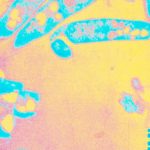Lien vers Pubmed [PMID] – 8134643
Rev Elev Med Vet Pays Trop 1993;46(1-2):283-90
By using biological data and historical research, we have tried to explain the difference between resistance and susceptibility to the diseases transmitted (cowdriosis) or associated (dermatophilosis) with the tick Amblyomma variegatum, in two cattle breeds of the French West Indies: the Creole crossbred cattle of Guadeloupe and the Brahman zebu cattle of Martinique. Have been studied the polymorphisms of 5 independent genetic systems (erythrocytic haemoglobin, serum albumin and transferrin, the class I region of the BoLA complex and the gamma S crystallin gene) in different breeds comprising Bos taurus cattle of Europe and Africa, Bos indicus of West and East Africa, as well as the Brahman of Martinique and the Creole crossbred of Guadeloupe. By comparing the different allele frequencies of these 5 non related polymorphic loci and by using the two different mathematical matrices of NEI and of CAVALLI-SFORZA, have been established the genetic distances between these breeds. It appears clearly that the Creole cattle of Guadeloupe are in an intermediate position between the Bos taurus N’Dama breed of West Africa and two Bos indicus zebu breeds, namely the West African Sudan zebu and the Brahman. Thanks to studies of different archieves in the Caribbean and in Europe, historical evidence have been accumulated on the geographical origins and on the chronology of the establishment of Creole and Brahman cattle in the French West Indies. The high resistance of the Creole cattle of Guadeloupe to diseases associated with or transmitted by the “Senegalese” tick Amblyomma variegatum seems to be due to the inheritance of a pool of genes from West African cattle and more particularly from the N’Dama breed.(ABSTRACT TRUNCATED AT 250 WORDS)

